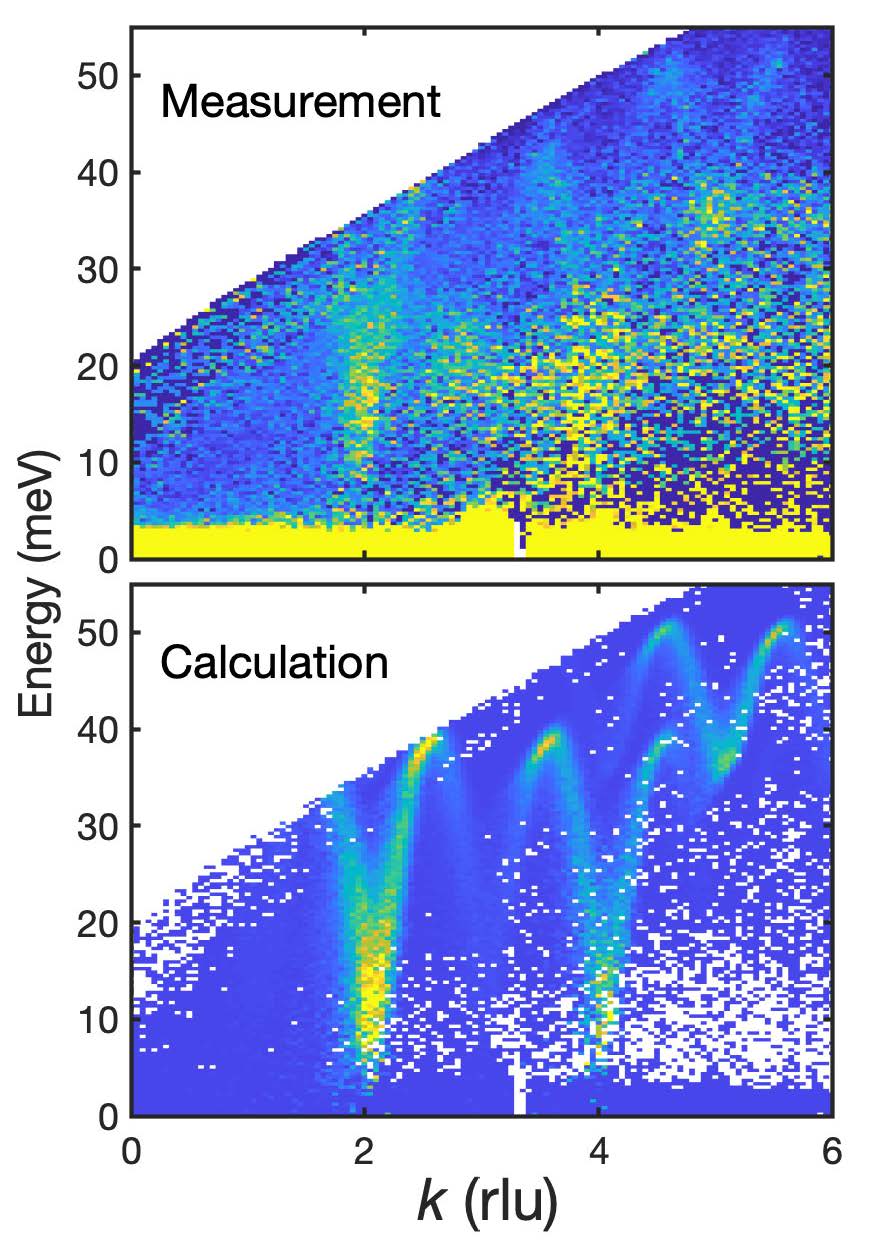Like graphite, the compound NiPS3 takes a structure with atomically thin layers, where the nickel atoms are arranged in a honeycomb structure, bonded weakly to one another, as shown in the video below. However, unlike graphite, it is also magnetic.
When you strip graphite down to just a single layer it becomes graphene, which exhibits some interesting properties. Researchers have been investigating whether doing the same to materials like NiPS3 could produce magnetic monolayers known as 'magnetic graphene' that could offer new ways of making advanced electronic devices.
Previous experiments have found that a sample just two layers thick, a bilayer, is magnetic, but that reducing it down to a single layer suppresses the magnetic order. However, similar compounds with a different transition metal atom to nickel, do remain ordered in monolayer form.
In this study, selected by Physical Review B as an editor's highlight, researchers from neutron facilities around the world worked together to investigate NiPS3, with the aim of understanding the magnetism in the bulk material and then using that knowledge to understand the magnetism and help explain why monolayers are not magnetically ordered.
Inelastic neutron scattering (INS) is an ideal method to gain the necessary fundamental understanding of magnetism in materials because it allows researchers to determine the strength, symmetry, and physical origin of magnetic interactions between atoms.
“INS experiments measure the correlated disturbances to the ordered magnetism at the atomic level, known as magnons," explains ISIS beamline scientist Russell Ewings. “By analysing the dispersion relation that the measurements give us, we can work out how the atoms interact."
 The researchers collected data at ISIS using the MERLIN time of flight spectrometer, on a collection of eight crystals. These measurements provided an overview of the entire dispersion relation. They also measured one of these crystals using the TAIPAN instrument at ANSTO and IN8 at the ILL. These are triple axis spectrometers, which provide a view of specific points on the dispersion surface, but with high intensity. They were also able to focus on lower energies than the MERLIN measurements.
The researchers collected data at ISIS using the MERLIN time of flight spectrometer, on a collection of eight crystals. These measurements provided an overview of the entire dispersion relation. They also measured one of these crystals using the TAIPAN instrument at ANSTO and IN8 at the ILL. These are triple axis spectrometers, which provide a view of specific points on the dispersion surface, but with high intensity. They were also able to focus on lower energies than the MERLIN measurements.
“Let's face it, this study was particularly tricky because the experimental signal was very weak and had to be measured over a broad energy range," commented Andrew Wildes, the lead author, from the Institut Laue Langevin. “The data from the three instruments gave us a comprehensive picture of the magnons with unprecedented detail. Our analysis helps us understand why NiPS3 has the magnetic properties that it does, from bulk crystals down to an atomic monolayer. For example, we found that there is a stronger interaction between the layers in NiPS3 than for other similar compounds like CoPS3, FePS3 and MnPS3."
According to the Mermin-Wagner theorem, truly two-dimensional materials cannot be magnetic, so this inter-planar interaction is how NiPS3 remains magnetic in two layers but not in one. The other similar materials that do show magnetism in their monolayer form must have other forms of anisotropy to stabilise this, which could also be studied using neutron scattering.
Figure, right, shows data collected on MERLIN alongside a simulation.
Further information
The full paper can be found online at DOI: 10.1103/PhysRevB.106.174422
